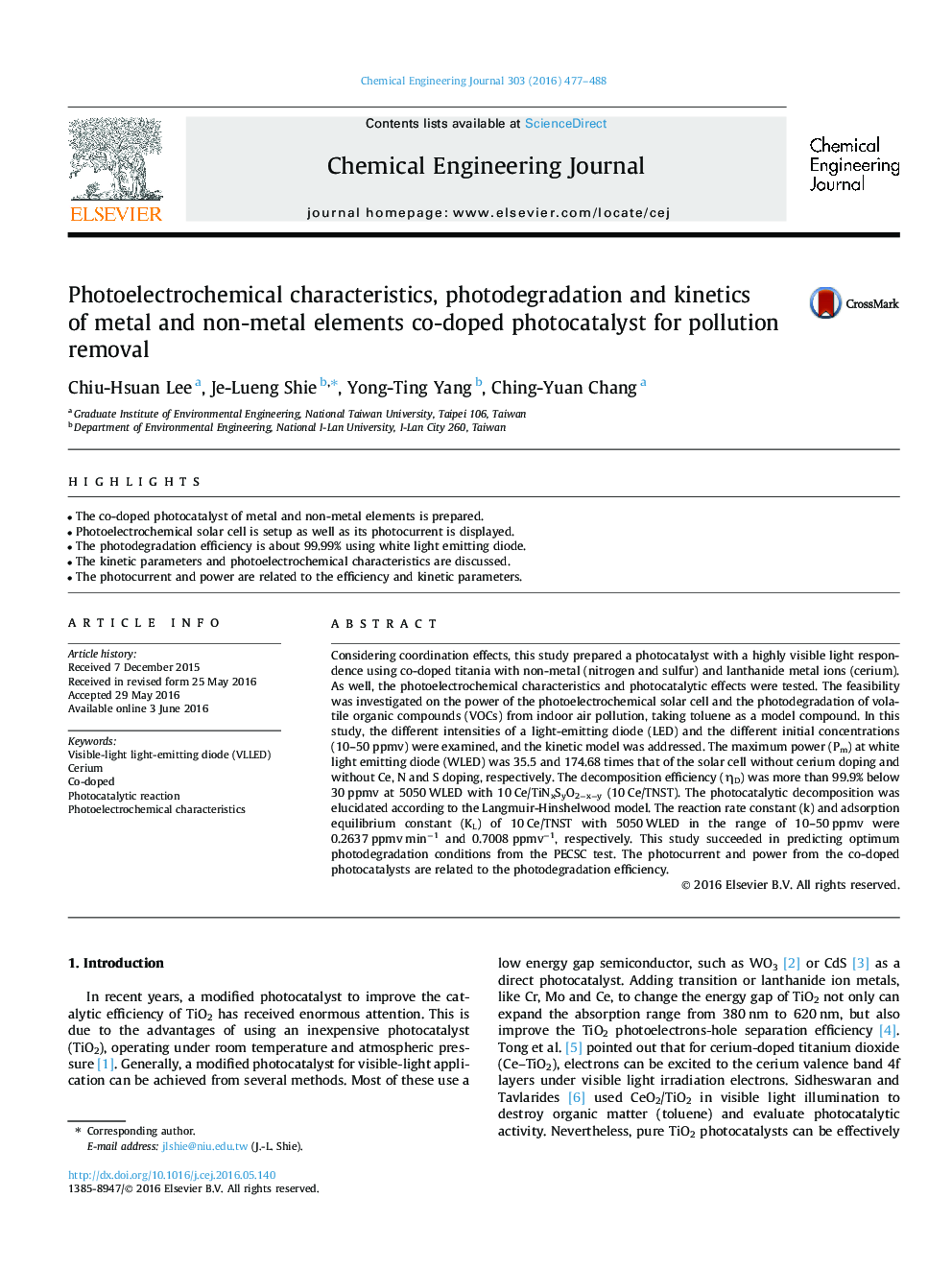| کد مقاله | کد نشریه | سال انتشار | مقاله انگلیسی | نسخه تمام متن |
|---|---|---|---|---|
| 145487 | 456341 | 2016 | 12 صفحه PDF | دانلود رایگان |
• The co-doped photocatalyst of metal and non-metal elements is prepared.
• Photoelectrochemical solar cell is setup as well as its photocurrent is displayed.
• The photodegradation efficiency is about 99.99% using white light emitting diode.
• The kinetic parameters and photoelectrochemical characteristics are discussed.
• The photocurrent and power are related to the efficiency and kinetic parameters.
Considering coordination effects, this study prepared a photocatalyst with a highly visible light respondence using co-doped titania with non-metal (nitrogen and sulfur) and lanthanide metal ions (cerium). As well, the photoelectrochemical characteristics and photocatalytic effects were tested. The feasibility was investigated on the power of the photoelectrochemical solar cell and the photodegradation of volatile organic compounds (VOCs) from indoor air pollution, taking toluene as a model compound. In this study, the different intensities of a light-emitting diode (LED) and the different initial concentrations (10–50 ppmv) were examined, and the kinetic model was addressed. The maximum power (Pm) at white light emitting diode (WLED) was 35.5 and 174.68 times that of the solar cell without cerium doping and without Ce, N and S doping, respectively. The decomposition efficiency (ηD) was more than 99.9% below 30 ppmv at 5050 WLED with 10 Ce/TiNxSyO2−x−y (10 Ce/TNST). The photocatalytic decomposition was elucidated according to the Langmuir-Hinshelwood model. The reaction rate constant (k) and adsorption equilibrium constant (KL) of 10 Ce/TNST with 5050 WLED in the range of 10–50 ppmv were 0.2637 ppmv min−1 and 0.7008 ppmv−1, respectively. This study succeeded in predicting optimum photodegradation conditions from the PECSC test. The photocurrent and power from the co-doped photocatalysts are related to the photodegradation efficiency.
Journal: Chemical Engineering Journal - Volume 303, 1 November 2016, Pages 477–488
